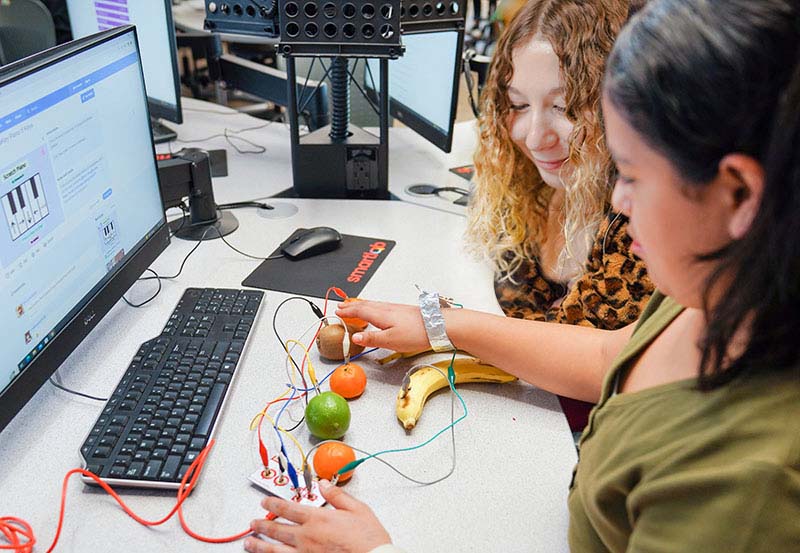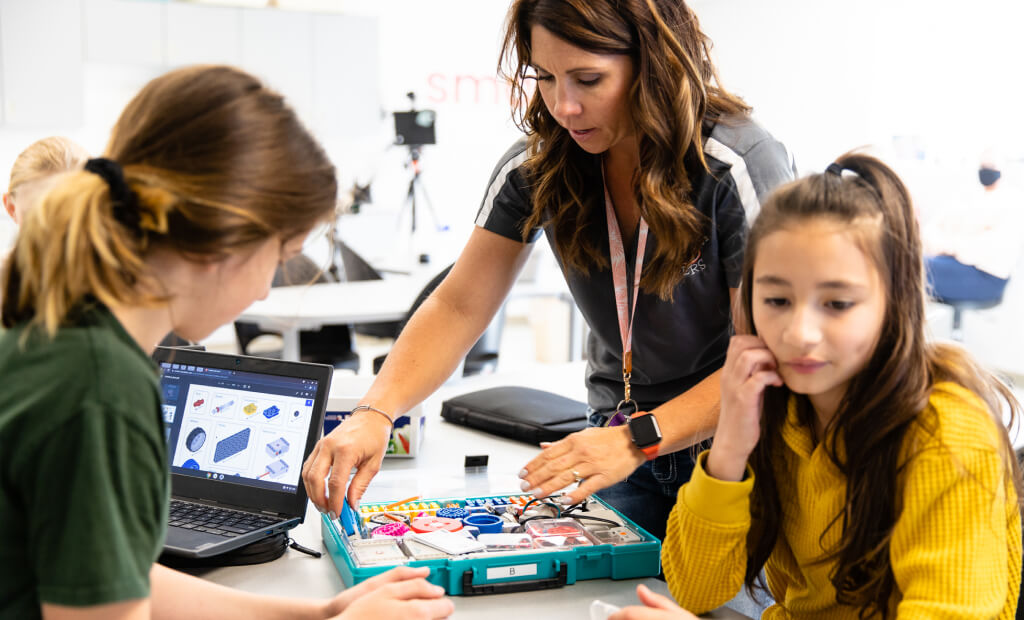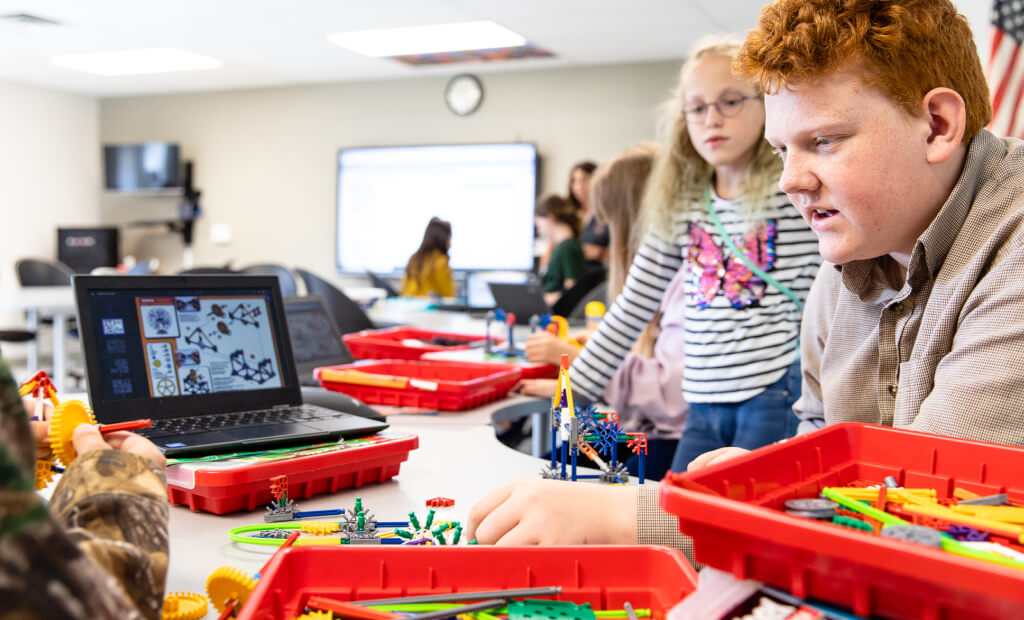10 Tips for Teaching 21st-Century Skills with Limited Resources
As a teacher, what are your options for creating or implementing an engaging, innovative, and pedagogically sound curriculum if your resources are limited?
Many people associate “resources” with money — but while school funding does have an impact on program implementation, there are other crucial resources that may be in short supply. When teachers seek to introduce new learning engagements or programs, they’re spending their own time and energy, plus the goodwill and trust of school stakeholders, including staff, parents, community members, and of course, their students.
The increasingly crucial integration of 21st-century skills development in K–12 education throws any resource gaps into sharp relief. However, schools must prioritize sustainable, innovative programs and maintain dynamic curriculum if they want to help students strengthen their 21st-century skills.
So how do we prepare students for life beyond the classroom when time, money, and trust in educational innovation can seem scarce? We’ve got 10 tips to help educators make new and better use of available resources, so they can help students develop the skills needed to succeed in tomorrow’s workforce.
Defining Key Skills and Competencies
The term “21st-century skills” still brings to mind space-age technology — even though we are well into the 21st century at this point! While some 21st-century skills do refer to technology literacy, the category also includes interpersonal skills that are crucial for success in future careers that support a growing global economy. In the working world, these competencies are often called “soft skills,” and are applicable (if not critical) in a wide range of careers.
Across the U.S., state-level Departments of Education aim to position school as the place where we prepare young learners for future careers. Not only does this mean imparting technical, career-ready skills, but it also means helping students develop an increasingly complex baseline of interpersonal skills and competencies expected of anyone participating in our interconnected world.
Examples of these skills include:
- Critical thinking and problem solving
- Collaboration and communication
- Creativity and innovation
- Flexibility and adaptability
- Information literacy
- Media literacy
- Technology literacy
- Social and cross-cultural skills
- Leadership and responsibility
- Productivity and accountability
Opportunities to develop these skills should be integrated into standard academic curriculum, but it is often at the teacher’s discretion as to how, when, and where to implement them. Fortunately, the majority of 21st-century skills can be taught and practiced with limited resources, since all that is required (most of the time) is one’s own brain — and maybe a buddy.
The Significance of 21st-Century Skills
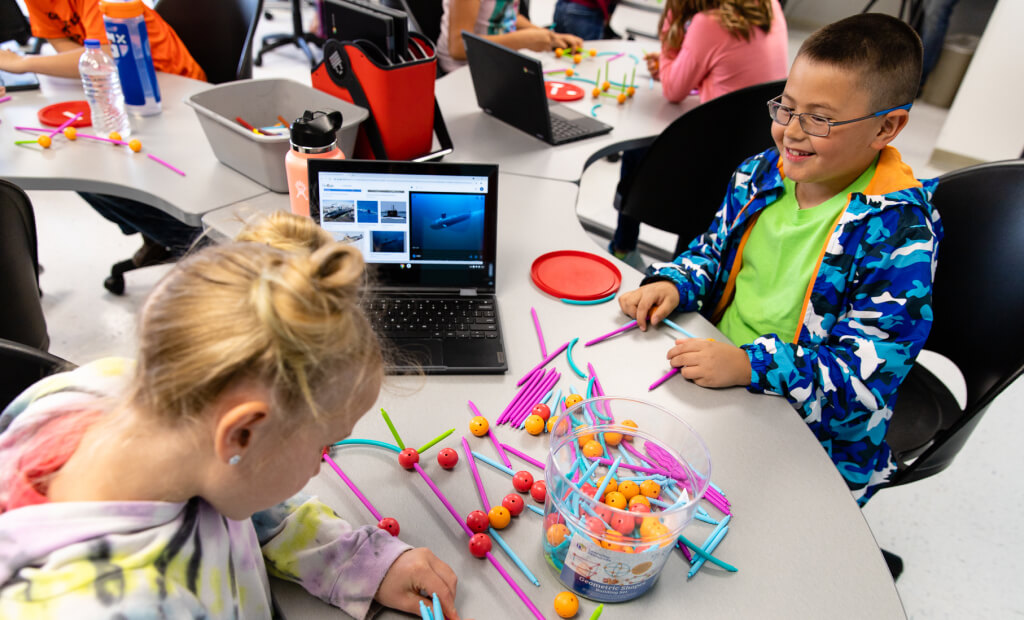
As the integration of 21st-century skills building is becoming more common in classrooms worldwide, their importance is increasingly understood. Learning these next-generation skills at a young age carries lifelong benefits.
Having a strong 21st-century skill set can help us:
- Make informed decisions
- Work productively as part of a team
- Navigate and adapt to complex work environments
- Adapt to change
- Forge positive interpersonal relationships
- Navigate nuanced social situations
- Successfully interact with people from diverse cultural backgrounds and perspectives
- Contribute to the global economy
- Participate in the effective functioning of society
- Understand others and be understood
- Efficiently search for, evaluate, and use information appropriately
- Develop new and innovative solutions to problems
- Understand technology and media
- Empathize with others’ lived experiences
- Nurture curiosity and pursue lifelong learning
Challenges for Educators with Limited Resources
A shortage of tools and resources presents several obstacles for educators attempting to teach their students 21st-century skills:
- Limited access to technology: Schools that lack sufficient access to technology and digital tools may prevent teachers from integrating important educational technology into lessons.
- Inadequate training: Teachers may not receive adequate training for effectively incorporating 21st-century skills into their curriculum, potentially resulting in students receiving incomplete or inaccurate lessons.
- Student disengagement: Without engaging resources and tools, students may become disinterested in learning, which impacts their overall motivation and in-class participation.
- Equity issues: Disparities in access to resources based on zip code or socioeconomic status can exacerbate educational inequalities, limiting opportunities for certain groups of students.
- Assessment challenges: Traditional assessment methods may not be designed to accurately measure 21st-century skills, which poses challenges for evaluating student progress and success.
- Scalability and sustainability: New teaching approaches and programs may experience a short life, particularly if there are no plans in place to sustain them after the initial implementation team passes on their duties.
- Keeping content up-to-date: Outdated resources and curriculum may not reflect the rapidly changing landscape of 21st-century skills, requiring updates and revisions year after year.
- Time constraints: Teachers may have limited time to develop and implement new teaching strategies, especially when balancing their other daily responsibilities.
- Limited supplies: Teachers are increasingly asked to provide their own classroom supplies, which poses a challenge for teachers in lower-income schools or with less discretionary income.
- Staffing shortages: A shortage of teachers and support staff can strain efforts to pilot or implement new programs.
- Educator burnout: The combination of limited resources in underserved schools — including time, energy, and support — and increased demands on teachers may contribute to burnout and decreased job satisfaction.
It’s important to note that some of these challenges — such as educator burnout and staffing shortages — are cyclical, and can both cause and be caused by limited resources.
Addressing these challenges requires a comprehensive approach that includes investing in professional development, providing equitable access to resources, and fostering collaborative partnerships within the wider educational community.
10 Creative Instructional Approaches to Build 21st Century Skills
Too often, it is the most innovative and energetic teachers who encounter resource-related roadblocks when trying to introduce new programs to teach 21st-century skills. Administrators, as supportive as they may be, often pose practical but disappointing rebuttals; they may point out that producing or implementing a pedagogically sound program from scratch within their school system could cost too many limited resources to execute quickly or well.
Creative teachers, therefore, must find ways to maximize their existing resources to bring relevant, exciting curricula to their students. Here are some creative and practical ways to forge ahead using what’s on hand:
- Maximize the use of existing technology: Make the most of the technology resources already available in the classroom, such as computers, tablets, interactive whiteboards, and internet connectivity. Prioritize using basic and widely available technology tools that require minimal training and support, ensuring accessibility for both teachers and students.
- Utilize free or open-source digital tools: Take advantage of free online resources, software, and educational platforms widely available on the internet to enhance teaching and learning experiences. Many research institutions and media platforms offer free learning tools appropriate for K–12 students.
- Utilize crowdfunding platforms: Explore platforms like DonorsChoose or GoFundMe to raise funds for classroom resources, equipment, and materials that support 21st-century skills development. This can take some of the financial strain off providing one’s own classroom supplies.
- Repurpose everyday items or recycled materials: Get creative with instructional materials by repurposing everyday items or using recycled objects for hands-on activities, experiments, and projects.
- Focus on cultivating student interests: Tailor lessons and activities to align with student interests and passions, leveraging their enthusiasm to drive authentic engagement and motivation. Real-world relevancy is a cornerstone of project-based learning, wherein students engage with concepts and challenges that have real meaning to them.
- Engage families and guardians: Foster strong partnerships with families through flexible communication strategies and inclusive activities that involve parents and caregivers in their child’s learning journey. If caregivers are aware of what their child is experiencing in the classroom day-to-day, they will gain a better understanding of classroom needs and potentially advocate for new programs.
- Implement peer-to-peer learning strategies: Foster a collaborative learning environment where students can learn from each other through group work, discussions, and peer tutoring. Peer-to-peer learning encourages active engagement and helps students develop communication, teamwork, and problem-solving skills.
- Partner with local businesses, nonprofits, and universities: Forge partnerships with local organizations to provide students with real-world experiences and learning opportunities that are relevant to their community. Collaborating with external partners can enrich students’ learning experiences and expose them to diverse perspectives and career pathways.
- Join or form networks with other teachers: Connect with fellow educators to share resources, lesson plans, and best practices for teaching 21st-century skills. Collaborative networks provide opportunities for professional growth and can help teachers access valuable resources and support.
- Encourage screen-free learning: Promote unplugged learning experiences that do not rely on technology, such as reading a book, using an encyclopedia, or recording observations in a notebook. This approach encourages students to explore topics of interest, engage in hands-on activities, and develop critical thinking skills without the need for digital tools.
The good news is that practicing 21st-century skills (or “soft” skills) such as communication, teamwork, problem-solving, goal-setting, and reflection takes little to no external resources or tools. These skills are essential for success in the modern workforce and adult life in general, and can be fostered through partner projects, games, or group discussion.
Remember, as a teacher, you do not need to know everything. Putting the student in the driver’s seat almost always guarantees a higher level of engagement and learning retention — plus, it gives teachers the opportunity to observe how students approach their own learning, which can inform their classroom instruction going forward.
How to Create an Engaging Classroom Environment with Limited Resources
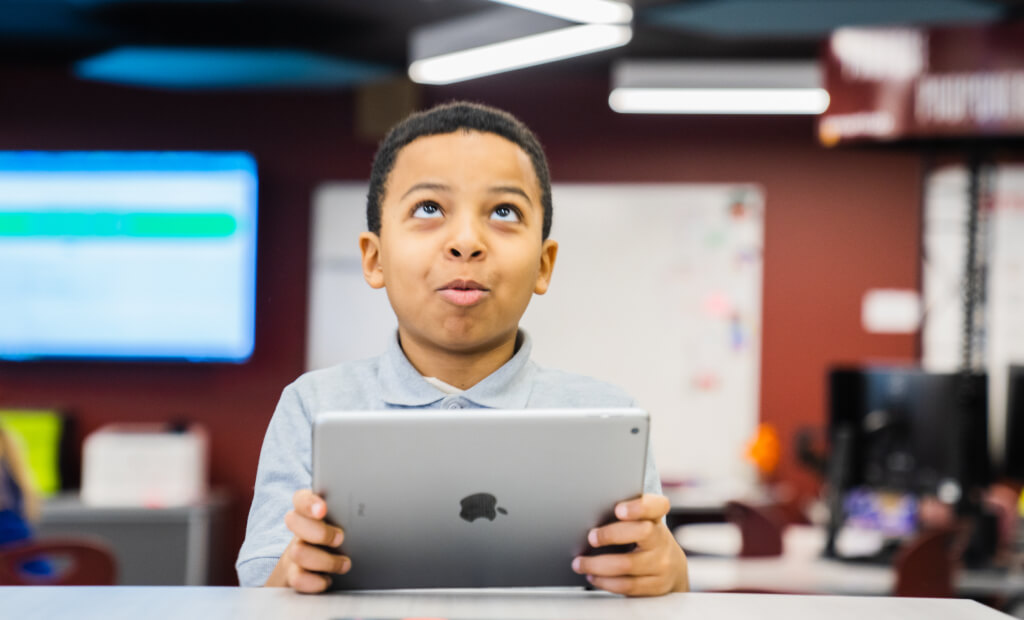
The goal of the physical classroom is to provide a space that is conducive to learning, whether students are listening quietly to the teacher, working in groups, enjoying free time, or presenting their learning to their classmates. Everything in the classroom should lend itself to learning, comfort, or creativity — which absolutely can be achieved in spite of limited resources.
Here are some simple solutions to creating an engaging learning environment with little to no additional expense or effort on the teacher’s part:
- Flexible seating and layouts: Design the classroom with versatile seating arrangements that allow for easy rearrangement based on activities and student preferences. Include a variety of seating options such as bean bags, floor cushions, stools, and standing desks.
- Digital media zone: Create a designated area where students can access and interact with digital tools and resources. This can include computers, tablets, interactive whiteboards, and audiovisual equipment for multimedia presentations and collaborative projects. Having a defined “zone” for technology can ease the transition between digital and screen-free learning.
- Learning stations: Set up different stations or activity areas within the classroom to accommodate various learning styles and preferences. Each station can focus on a specific topic or skill, allowing students to rotate between them and engage in hands-on learning experiences.
- Interactive displays and workspaces: Incorporate interactive displays such as bulletin boards, flip charts, and touchscreen monitors to showcase student work, provide visual aids for lessons, and encourage active participation. Install large whiteboards or writable surfaces where students can brainstorm ideas, work on group projects, solve problems collaboratively, and share their thoughts and insights
- Resource center: Establish a designated area in the classroom stocked with books, reference materials, manipulatives, and other resources to support student learning and exploration.
- Comfortable reading area: Create a cozy and inviting reading corner with comfortable seating, soft lighting, and a variety of age-appropriate books and magazines to encourage reading for pleasure and relaxation.
- Art and creativity station: Designate a space for creative expression and artistic activities, equipped with art supplies, craft materials, and tools for hands-on projects and exploration.
- Cultural and global elements: Incorporate diverse cultural elements, artifacts, maps, and displays representing different countries and regions to foster cross-cultural understanding and appreciation among students.
- Clear and functional organization: Implement streamlined storage solutions, labeling systems, and visual cues to keep the classroom organized and clutter-free. This makes it easier for both the teacher and students to locate materials and resources, saving valuable class time.
- Feedback and reflection space: Dedicate an area where students can provide feedback on their learning experiences, set goals, reflect on their progress, and showcase their achievements through self-assessment and peer evaluation. This space can also serve as a teacher-student conferencing area for individualized support and feedback.
Innovative 21st-Century Learning with SmartLab
A SmartLab is a turnkey, K–12 learning environment with comprehensive PBL and STEM curricula — but it’s also a place where young learners can experiment, learn to work together, struggle productively, and make entirely new career connections that will shape their future.
Every SmartLab engagement is built with 21st-century skills development in mind. When students build and code robots, they are practicing self-guided learning and experimentation while building computer literacy; in tackling a video project, students learn to assemble and manage a team, troubleshoot problems, and make themselves understood, all while learning to use audio-visual tools.
The SmartLab provides a full curriculum that aligns with national standards, including the Next Generation Science Standards (NGSS) and the International Society for Technology in Education (ISTE) standards. Perhaps best of all, the SmartLab curriculum comes with comprehensive teacher training, so there’s no need to be a “STEM person.” Both technical and instructional support are always available during the school day, so teachers can spend more time focusing on their students and less time troubleshooting unfamiliar technologies.
Schools across the country have experienced how a SmartLab can help mitigate resource gaps, engage students, and support teachers in the classroom — even in schools with chronically limited resources or poor test scores. The scalable curriculum means that, even if a teacher or facilitator moves on, another facilitator can step in and begin supporting students right away. Many SmartLab engagements cover several core subject areas in one activity or lesson, helping teachers maximize precious class time. And the ability to personalize engagements means that every student can experience wonder and practice essential skills while absorbing STEM content knowledge.
If you or your school are searching for a learning solution that will maximize learning time while supporting educators and preparing students for life outside the classroom, it might be time to explore the possibility of a SmartLab.
Check out our learning programs or book your visit to a lab today.
Improving Math Scores at a Denver Elementary
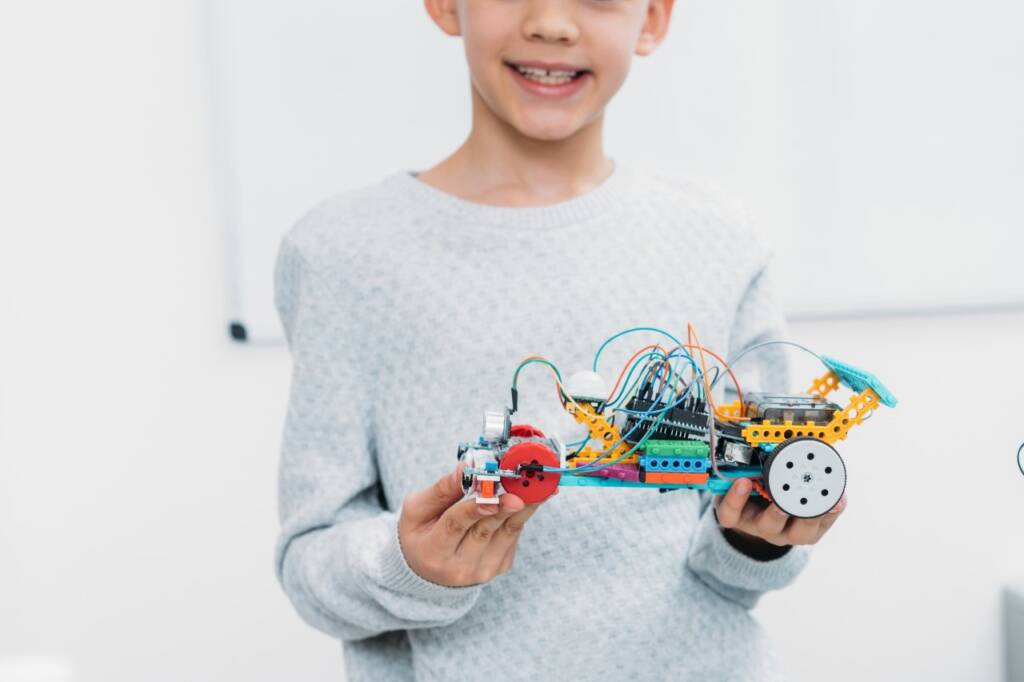
Find out how a SmartLab HQ helped grow standardized test scores.



